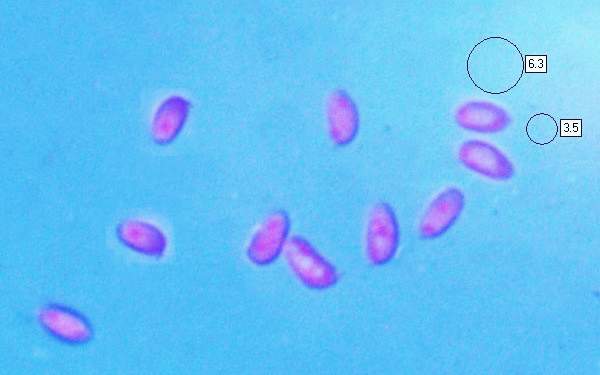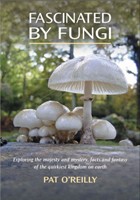Clavaria fumosa Pers. - Smoky Spindles
Phylum: Basidiomycota - Class: Agaricomycetes - Order: Clavariales - Family: Clavariaceae
Distribution - Taxonomic History - Etymology - Identification - Culinary Notes - Reference Sources
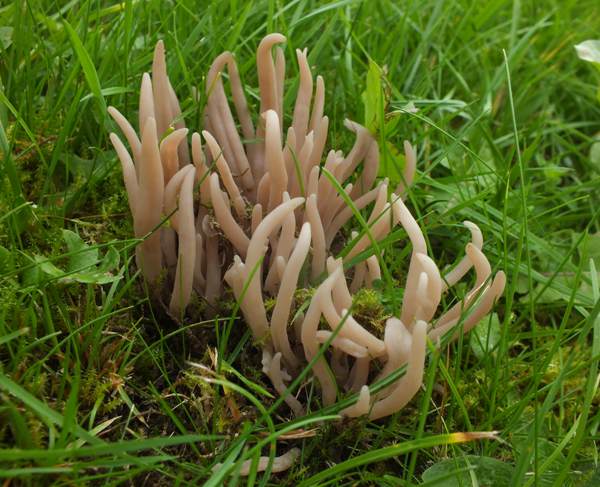
Simple, unbranched clubs but often in bunches, like eels with their tails twisting upwards as they fight over a morsel buried in a riverbed, Smoky Spindles is one of the many fairy clubs and corals that pop up in unimproved grassland. These worm-like eruptions are very brittle and they usually snap into pieces if you try to bend them or even to remove blades of grass to improve the aesthetic appearance of a photograph.
This tufted fairy club fungus is fairly easy to spot… but only when it is growing in short grass.
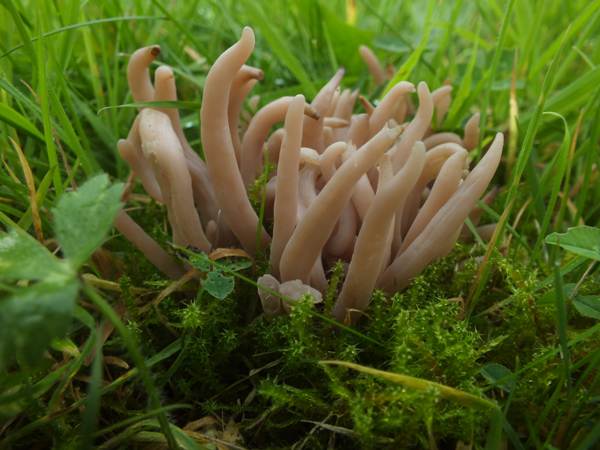
Distribution
Common throughout Britain and Ireland, Clavaria fumosa was originally described from France and is also found in most parts of mainland Europe. This species is reported also from North America.
Taxonomic history
Some club-like and coral-like fungi are ascomycetous, but fairy clubs of Clavaria and related genera belong to the Basidiomycota.
Smoky Spindles was was originally described in 1795 by Christian Hendrik Persoon, who gave this species its currently accepted scientific name. The name Clavaria fumosa was later sanctioned by the the great Swedish mycologist Elias Magnus Fries in his landmark publication Systema Mycologicum of 1821.
Synonyms of Clavaria fumosa include Clavaria striata Pers.
Etymology
The generic name Clavaria comes from the Latin clava, meaning a club. Not quite so obvious, but again from Latin, is the specific epithet fumosa, which means smoky.
Identification guide
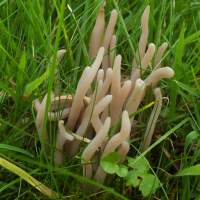 |
DescriptionFusiform; fasciculate; brittle; often somewhat laterally flattened and sometimes longitudinally grooved; occasionally straight but more often wavy with either bluntly pointed or rounded tips; colour ranges from grey brown via pinkish brown to pale ochre brown. The individual stems are typically 2 to 12cm tall and 3 to 10mm across. |
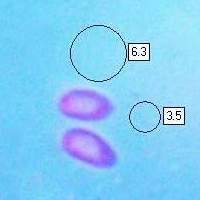 |
SporesEllipsoidal, smooth, 5.5-8 x 3.5-4µm; containing many small fine granules or oil drops. Spore printWhite. |
Odour/taste |
Not distinctive. |
Habitat & Ecological role |
Saprobic, on the ground in unimproved grassland and in leaf litter on woodland edges and clearings; less commonly in dense woodland. |
Season |
June to November in Britain and Ireland. |
Similar species |
Clavaria fragilis is similar but has white spindly fruitbodies. Clavulinopsis fusiformis has a similar form but is golden yellow. |
Culinary Notes
Smoky Spindles fungi are reported to be edible, but their scarcity and diminutive stature makes the collection of these fungi for food not worthwhile.
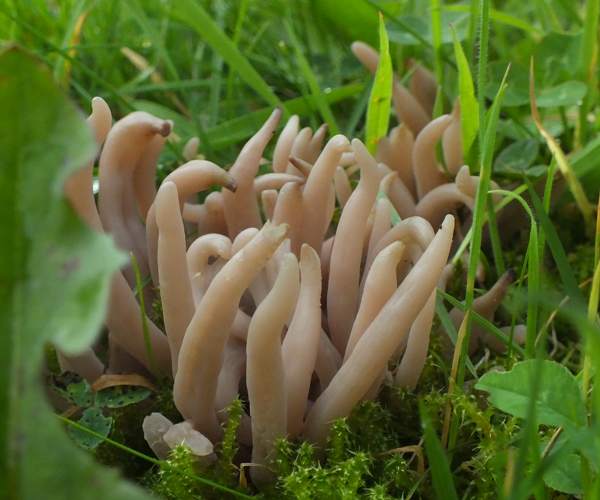
Reference Sources
Fascinated by Fungi, 2nd Edition, Pat O'Reilly 2016, reprinted by Coch-y-bonddu Books in 2022.
Persoon CH. (1795). "Observationes mycologicae". Annalen der Botanik (Usteri). 15: 1–39.
Dictionary of the Fungi; Paul M. Kirk, Paul F. Cannon, David W. Minter and J. A. Stalpers; CABI, 2008
Taxonomic history and synonym information on these pages is drawn from many sources but in particular from the British Mycological Society's GB Checklist of Fungi.
Fascinated by Fungi. Back by popular demand, Pat O'Reilly's best-selling 450-page hardback book is available now. The latest second edition was republished with a sparkling new cover design in September 2022 by Coch-y-Bonddu Books. Full details and copies are available from the publisher's online bookshop...
